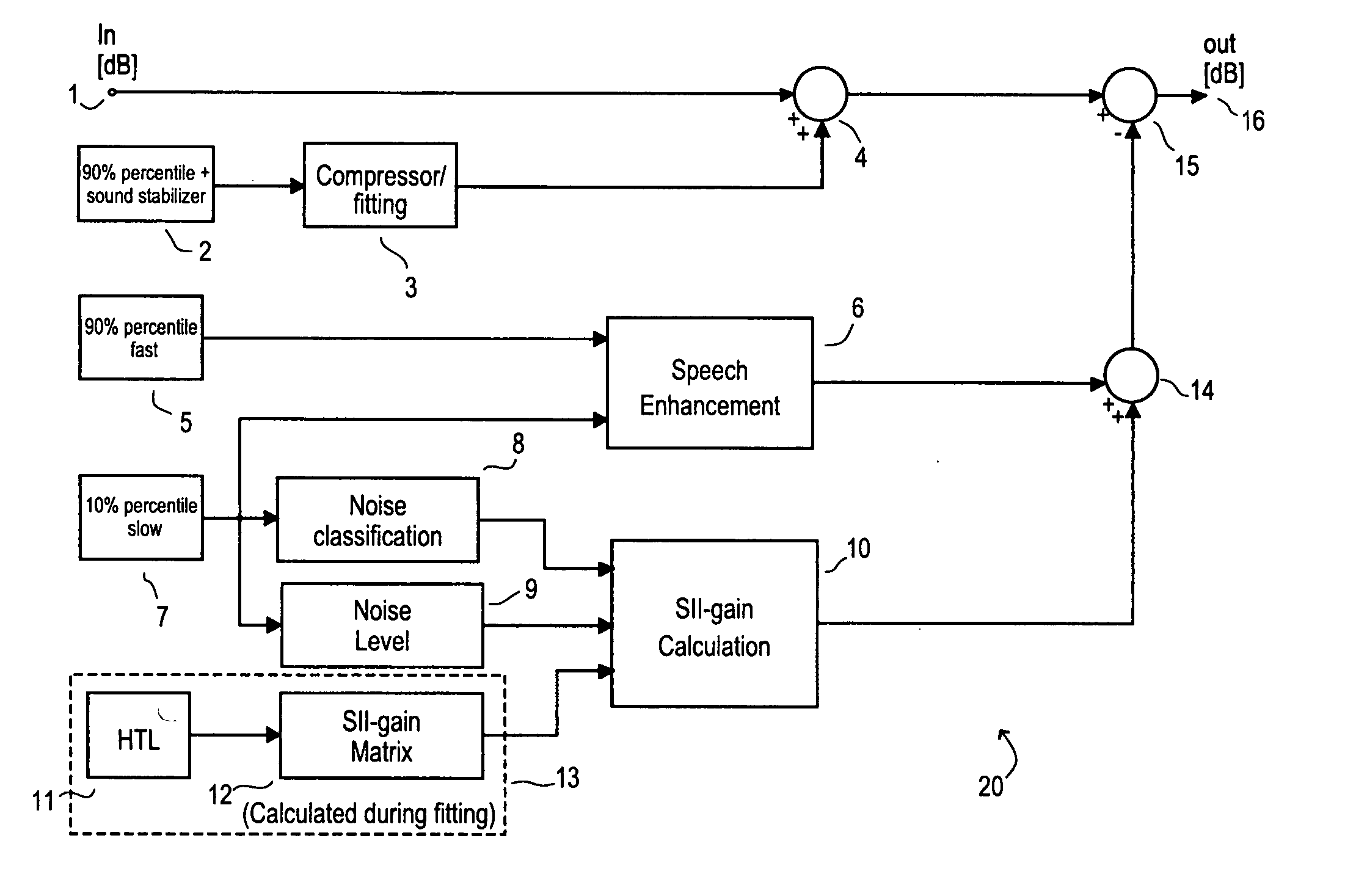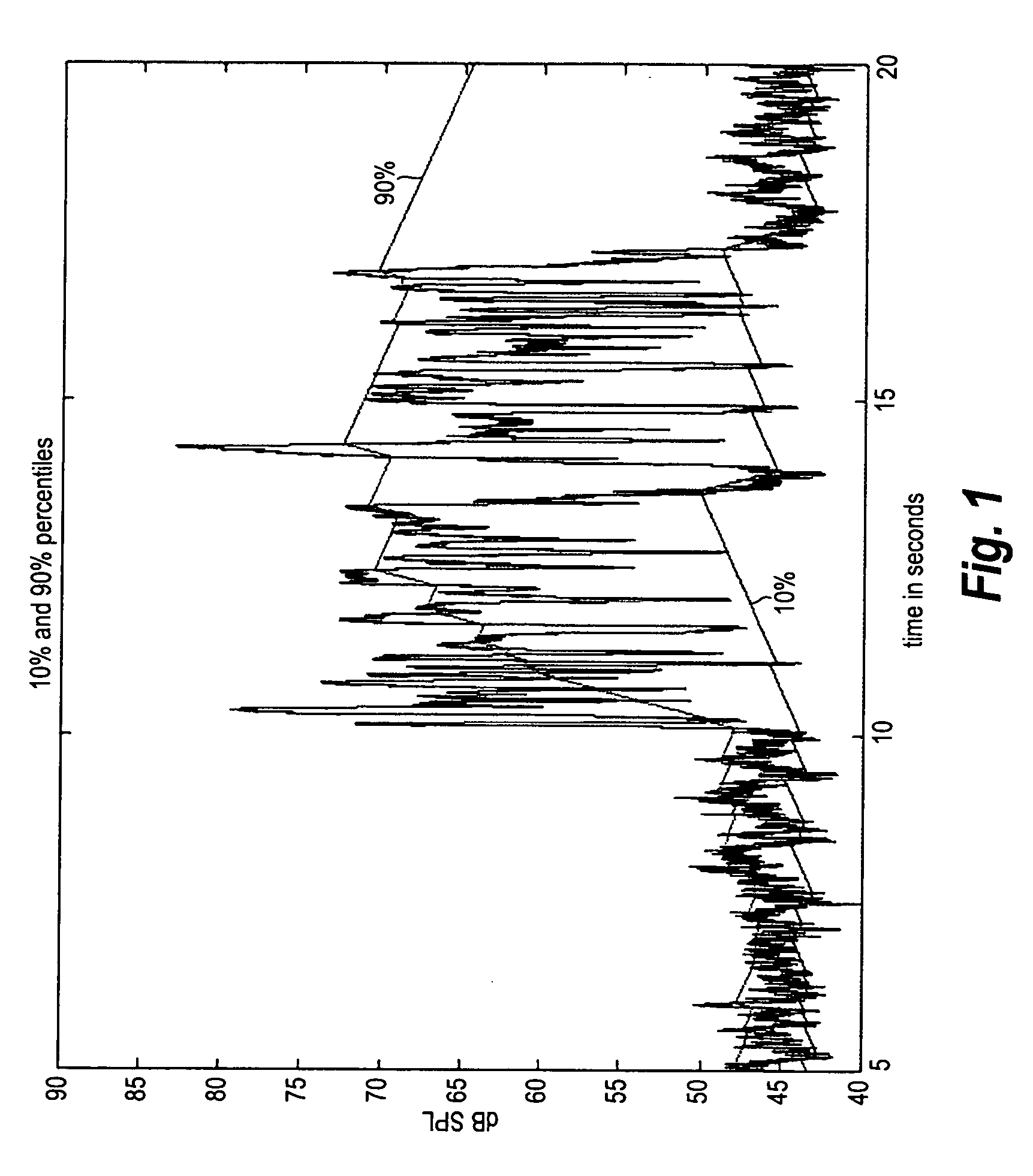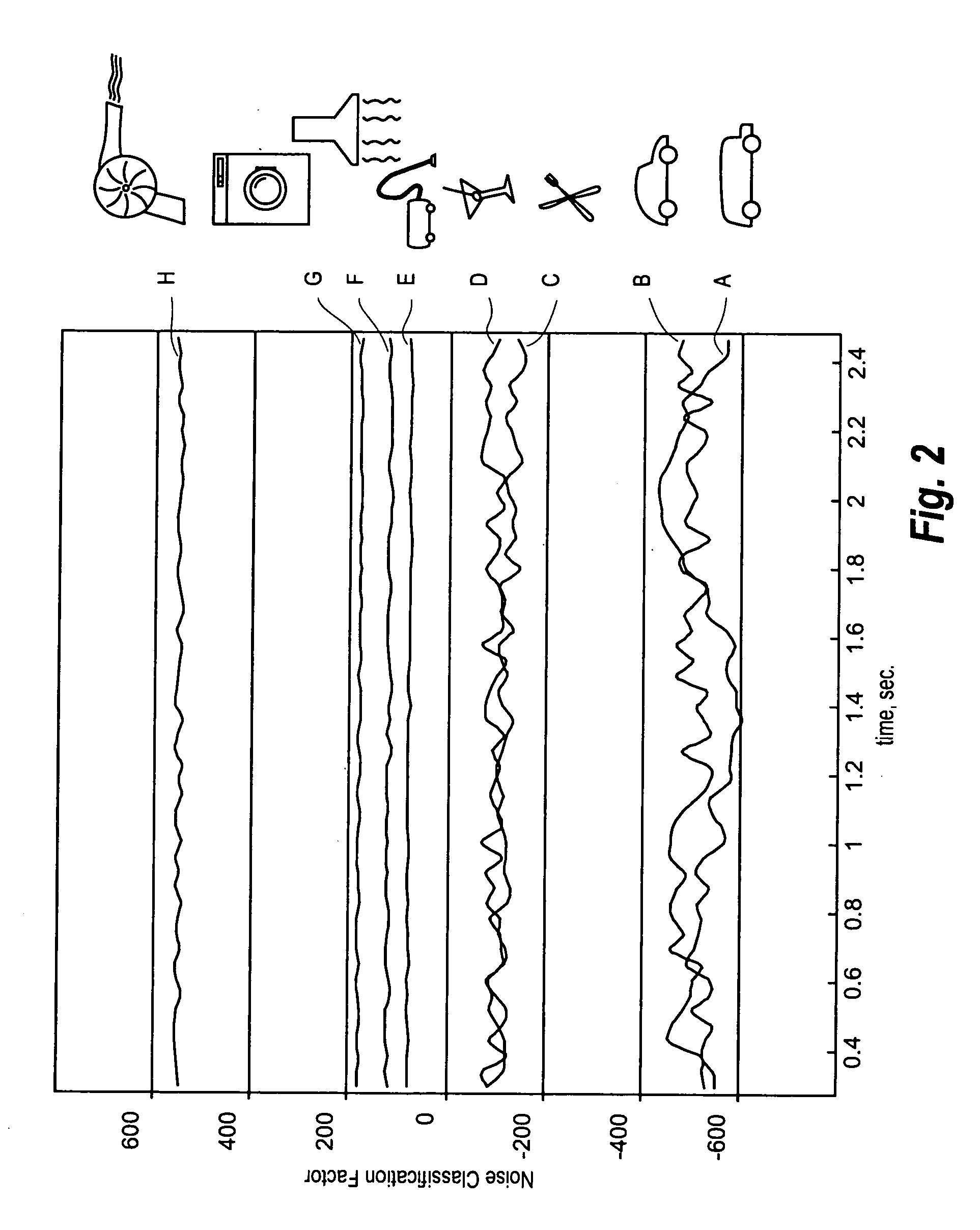Hearing aid and a method of processing signals
a technology of hearing aids and signals, applied in the field of hearing aids, can solve the problems of noise picked up from the surroundings by the hearing aid, the method is rather complicated, and the listener is both normal-hearing and hearing-impaired in the perception field, so as to reduce the amount of nois
- Summary
- Abstract
- Description
- Claims
- Application Information
AI Technical Summary
Benefits of technology
Problems solved by technology
Method used
Image
Examples
Embodiment Construction
[0046] In FIG. 1, a digitized sound signal fragment with a duration of 20 seconds is shown, enveloped by two curves representing the low percentile and the high percentile, respectively. The first 10 seconds of the sound signal consist mainly of noise with a level between approximately 40 and 50 dB SPL. The next 7-8 seconds is a speech signal superimposed with noise, the resulting signal having a level of approximately 45 to 75 dB SPL. The last 2-3 seconds of the signal in FIG. 1 are noise.
[0047] The low percentile is derived from the signal in the following way: The signal is divided into “frames” of equal duration, say, 125 ms, and the average level of each frame is compared to the average level of the preceding frame. The frames may be realized as buffers in the signal processor memory each holding a number of samples of the input signal. If the level of the current frame is higher than the level of the preceding frame, the low percentile level is incremented by the difference b...
PUM
 Login to View More
Login to View More Abstract
Description
Claims
Application Information
 Login to View More
Login to View More - R&D
- Intellectual Property
- Life Sciences
- Materials
- Tech Scout
- Unparalleled Data Quality
- Higher Quality Content
- 60% Fewer Hallucinations
Browse by: Latest US Patents, China's latest patents, Technical Efficacy Thesaurus, Application Domain, Technology Topic, Popular Technical Reports.
© 2025 PatSnap. All rights reserved.Legal|Privacy policy|Modern Slavery Act Transparency Statement|Sitemap|About US| Contact US: help@patsnap.com



